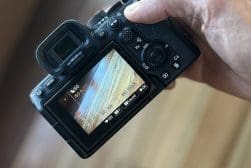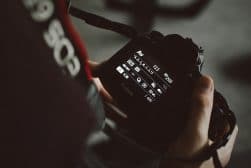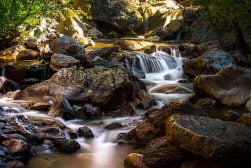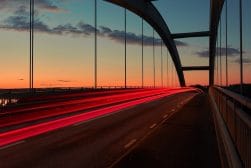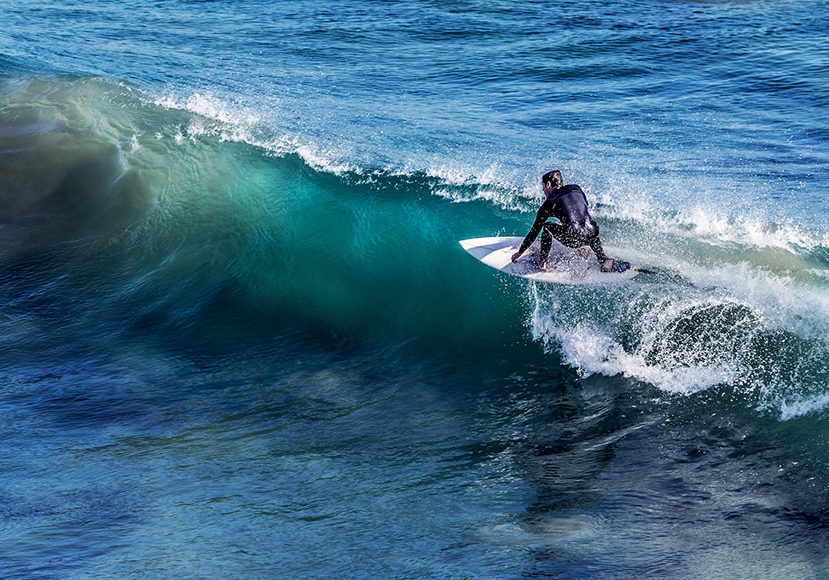
Best Shutter Speed for Sports Photography + Settings & Tips
Everything you need to know about shutter speed in sports photography for freezing the action to capturing motion, and the best settings to do it all.
Learn | By Ashley Darrow
I’m always getting asked about the shutter speed sports photographers use.
Having done a fair bit of action photography, I can show you the ropes when it comes to picking the right shutter speed for capturing the big game.
Sports photography is all about shutter speed.
Adjusting the speed of the shutter in your camera settings will freeze the action, or artistically use motion blur to convey the dynamic movement of athletes in their prime
This guide is going to unpack all of the ins and outs of shutter speed so that you can improve your sports photography skills.
If you need a quick refresher before diving in, read what shutter speed is in photography.
What Shutter Speed Should I Use for Sports Photography?

Credit: CSK
The gold standard for a professional sports photographer is a fast shutter speed of 1/1,000.
If you want to freeze high-energy action shots, you need that shutter speed or faster.
Just like with everything about photography, the basics will get you far, but things get a lot more interesting when you start to look into the details.
When to Use a Fast Shutter Speed

Credit: David Mark
Every sports photographer I know is going to tell you that a fast shutter speed is their bread and butter.
Capturing the moment-to-moment action of sports means getting the same kind of split-second performance out of your camera gear.
The reason so many professional sports photographers gravitate towards a faster shutter speed is that it allows them to freeze movement.
Those action-packed shots of athletes captured in the heat of a moment can only be achieved with a lightning-quick shutter speed.
If you’re looking to capture action shots that don’t have any motion blur, you want the fastest shutter speed your camera can deliver.
Most sports take place in brightly lit conditions. This is a huge advantage for photographers looking to use a quick shutter speed.
The faster you set your shutter speed, the less light will make it to the sensor on your camera. This means you’re going to need bright conditions to use the fastest shutter speeds your camera has to offer.
You might need to drop down to a slower shutter speed if you’re shooting a sporting event that takes place in a dimly lit arena.
You might also need to switch up shutter speeds when the lighting conditions change, like for a halftime show or if you’re taking pics of fans in the stands.
A fast shutter speed is also an absolute must for shooting in burst mode. Continuous shooting works best when you’re using a faster shutter speed.
Another case for a quick shutter speed is when you’re shooting using a flash.
I don’t often get to use a flash when I’m shooting sports photography because I don’t want to disturb the athletes during the game, but there are plenty of occasions where you can break out the strobe during or after, a game.
Flash photography often benefits from a faster shutter speed. The same shutter speed of 1/1000 is also a very comfortable shutter speed when you’re shooting with a flash in any setting.
How Much Do You REALLY Know About Photography?! 🤔
Test your photography knowledge with this quick quiz!
See how much you really know about photography...

When to Use a Slow Shutter Speed

Credit: Markus Spiske
Shooting sports photography isn’t always about a fast shutter speed that can freeze motion.
A slower shutter speed can be a good starting point for a sporting event with uneven or even dark artificial lighting.
Motion blur can be a good thing when it comes to sports photography.
Some of the most powerful sports shots I’ve ever seen haven’t cleverly Incorporated a strong motion blur effect.
Think of a boxer’s fist beginning to blur mid-punch or the wheels of a bicycle starting to dissolve at high speed.
These are just a few examples of how you can use motion blur to really sell the intensity of action to your audience.
If a high shutter speed lowers the amount of light reaching the sensor, then a slow shutter speed is going to increase the light that can reach the sensor.
If you’re not quite getting the lighting that you need for your shots, lowering your shutter speed is a great way to compensate. This is especially important if you’re looking to keep your aperture where it is for your shot.
Slow shutter speeds are also a great choice if you’re shooting individual shots rather than burst mode.
You can also decrease the speed of your shutter to get some cool artistic effects. Some of the hottest photo trends today are done by dropping shutter speeds and rotating your camera to swirl and blur lights in the background while keeping your subject in focus.
Slow shutter speeds also have an interesting effect when you use them alongside a flash. This allows you to freeze aspects of the action while still capturing motion blur.
Shutter Speed Settings for Indoor Sports vs. Outdoor Sports
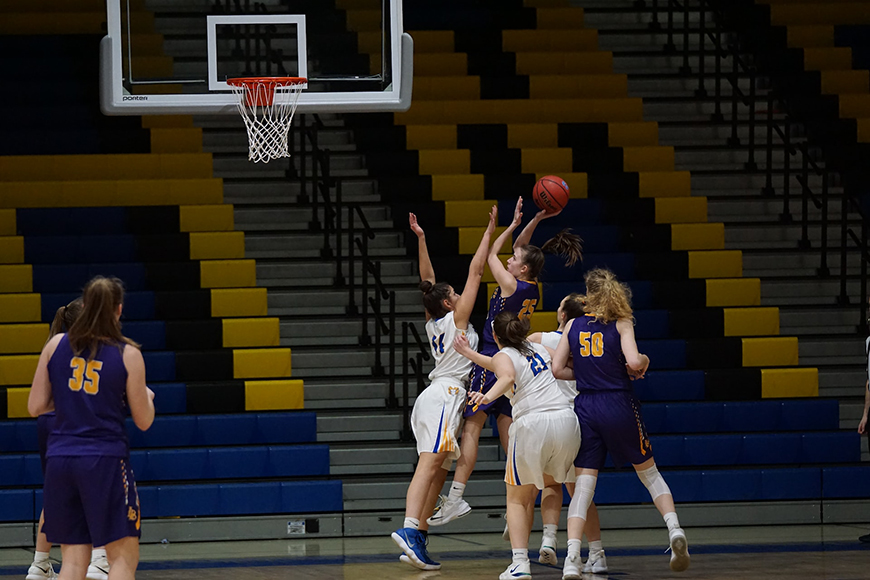
Photographing indoor sports events is going to pose a lot of unique challenges for photographers.
I’m going to walk you through the difficulties you’ll be facing and how to overcome them with a few clever camera settings.
The first thing that you want to consider is that the lighting in an indoor sporting event is inconsistent at best.
They’ll be a range of colors, temperatures, and light sources coming from all over the place.
Worst of all, these light sources are designed for spectators and athletes rather than photographers. You can expect conditions to be a little dimmer than you’d hope for.
Sports photographers often use zoom lenses with variable apertures. This means that your aperture is going to increase and let in less light as you zoom in.
We’re going to need to get clever to overcome the lighting problems that come with indoor sports photography.
I generally recommend starting with a shutter speed around 1/100. Depending on the lighting and the camera lens for sports you’re using, this might be just right to let in enough light and freeze the action.
You can always slow down the shutter speed or make it faster to dial in the results you’re looking for.
Outdoor sports photography is often a lot more forgiving when it comes to lighting.
When you’re outdoors, you have the advantage of using the single most powerful light source on the planet: the sun.
Whenever I’m shooting sports games or even wildlife, I always try to use a shutter speed between 1/500 and 1/1000.
If you’re shooting on a camera that can go higher than 1,000, you’re free to crank up that shutter speed as long as your image isn’t getting too dim.
If you’re dealing with a heavily overcast day or covering a sports event happening at night, you’ll either have to turn up your ISO or bring down your shutter speed to compensate.
What are the Best Settings for Sports Photography?
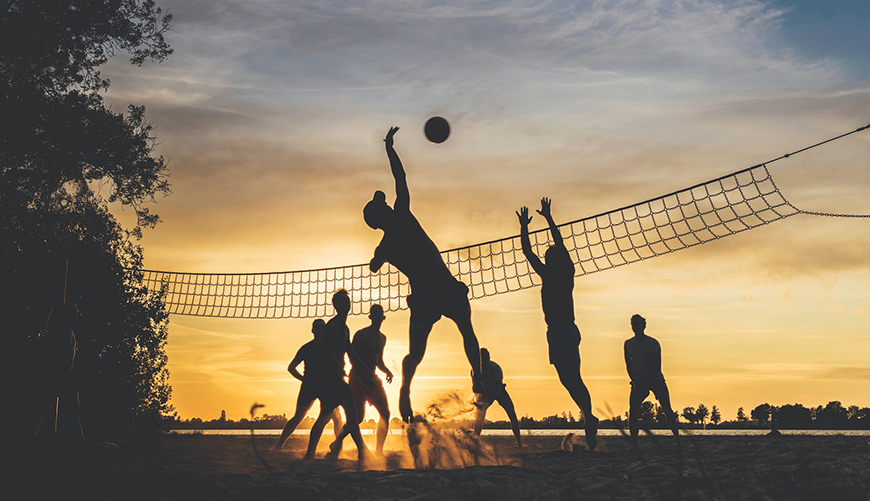
Credit: Jannes Glas
Here are the camera settings to concentrate on if you you want to get the best sports photos:
ISO
ISO isn’t the photography bogeyman it used to be.
Cameras and editing software are much more capable of handling the distortion created by a higher ISO, so don’t be afraid to turn it up a little in order to preserve the right shutter speed.
With that said, you still want to keep your ISO as close to your camera’s default setting as possible.
If you find your ISO going over 1,600, it’s probably time to consider a more open aperture or a slower shutter speed.
Aperture
Shooting with a wide open f-stop is often a great choice for sports photos as it lets in more light. However, it’s also going to limit the focal plane and blur the foreground and background.
You might want to go for a higher f-stop number, especially if you’re looking to capture multiple athletes at different positions in the field.
Sports Photography is all about making quick and sometimes dramatic adjustments to the exposure triangle.
If you have to tighten your aperture to compose the right shot, make sure to adjust your ISO or shutter speed accordingly.
White Balance for Indoor Sports
The sensor in your digital camera, as well as the software that it uses to process images, needs to understand the color temperature of ambient light in order to assemble the final image correctly.
Indoor sports arenas are often full of weird lighting choices from a photographer’s perspective.
I’ll often look around and see a rainbow of LED lights, bright halogen bulbs, and all kinds of different light temperatures and sources.
Setting a custom white balance for your sports photography camera is a great way to compensate for the chaotic lighting inside of a venue.
Read our guide to white balance >>
Image Stabilization
This one is going to be really short. Unless you’re using a tripod, turn your image stabilization on to get crisp shots while keeping up with the action.
Autofocus and Focus Lock
Autofocus and focus lock are going to be your best friend when it comes to, well, keeping the game in focus.
Continuous autofocus is going to tell your camera to keep tracking the movement, which will make bringing everything into focus that much easier.
You can also use focus lock, which will keep the camera focused on a single position.
You can then either manually track your subject or wait for the action to line up with your focus.
Should I Use Shutter Speed Priority Mode When Shooting Sports?
Shutter speed priority mode is one of the best settings when it comes to photographing a sporting event.
Shutter speed priority mode allows you to select the shutter speed that you want and then let your camera’s software decide the aperture and iso.
This is an amazing feature for capturing shots that have the correct exposure while letting you pick the shutter speed that’s going to freeze the action or get the motion blur you’re looking for.
One of the drawbacks of shutter priority mode is that it can cause a little bit of trouble with your aperture. Big changes in aperture caused by shutter priority mode can run the risk of spoiling your composition.
If you want to prioritize bokeh or make sure the foreground and background are in focus, you can shoot sports using aperture priority.
It’s best to use aperture priority and settings that have more consistent lighting. This helps you avoid shots that are blown out or underexposed.
Getting comfortable enough with your photography gear and building your skills up to the point where you can shoot in full manual is always going to give you the best pictures.
Even though manual mode gives you the finest level of control, there are plenty of professional photographers out there doing payed work with one of the priority modes.
FAQ
Is a higher shutter speed better for sports photography?
A high shutter speed is often the best choice for sports photography. It’s especially important to use a high or fast shutter speed when shooting in burst mode. A slower shutter speed can be useful for creating motion blur and catching an image that shows movement rather than freezing a moment.
What shutter speed do sports photographers use?
The ideal shutter speed for sports photography is going to be 1/1000. However, shutter speeds as slow as 1/500 can also create great sports photographs. Modern cameras have even faster shutter speeds, up to 1/8000 that can yield even better results.
What’s the best frame rate and shutter speed for a sports video?
A great starting place for sports video, or any video, is to set your shutter speed to as close to double your frame rate as you can get. This means if you’re filming at 60fps you should have a shutter speed of at least 1/120. In general, you should be using the highest frame rate your camera has for sports photography so that you can slow down and highlight key moments.

Check out these 8 essential tools to help you succeed as a professional photographer.
Includes limited-time discounts.





